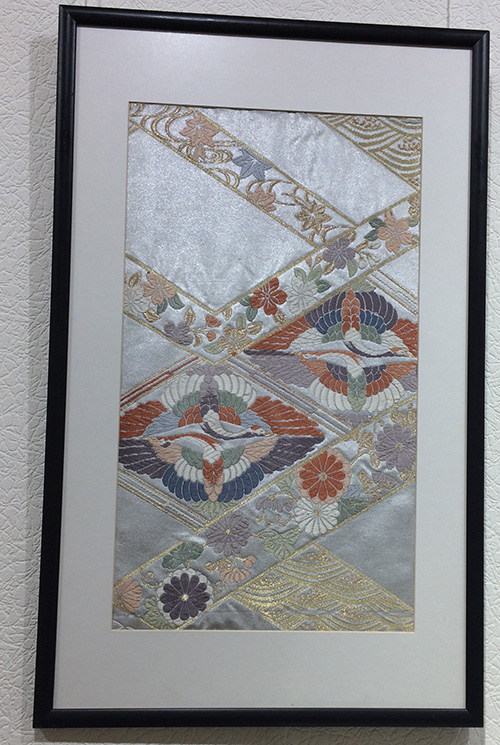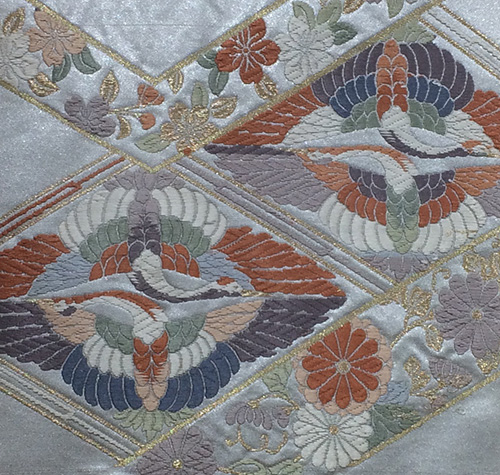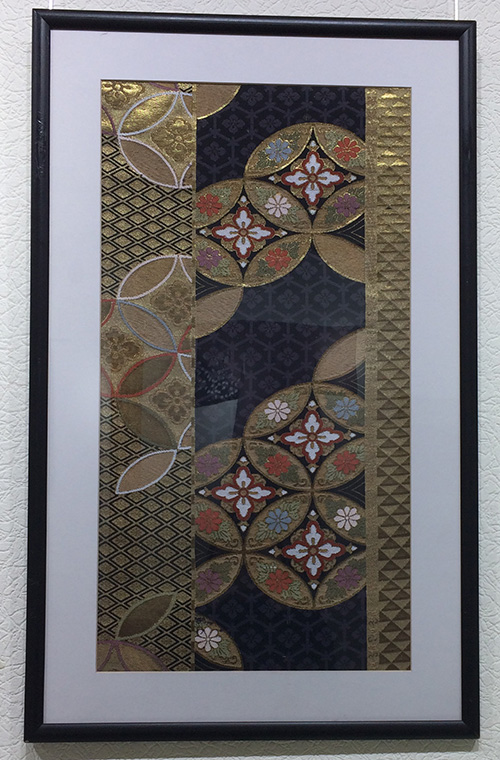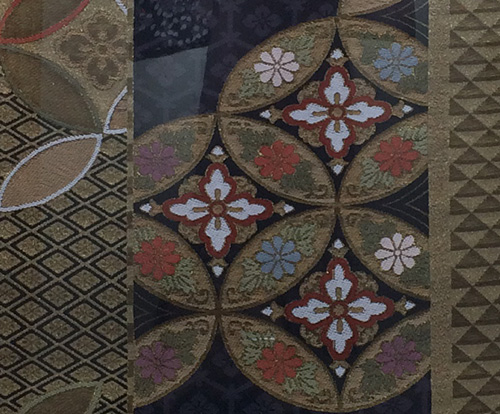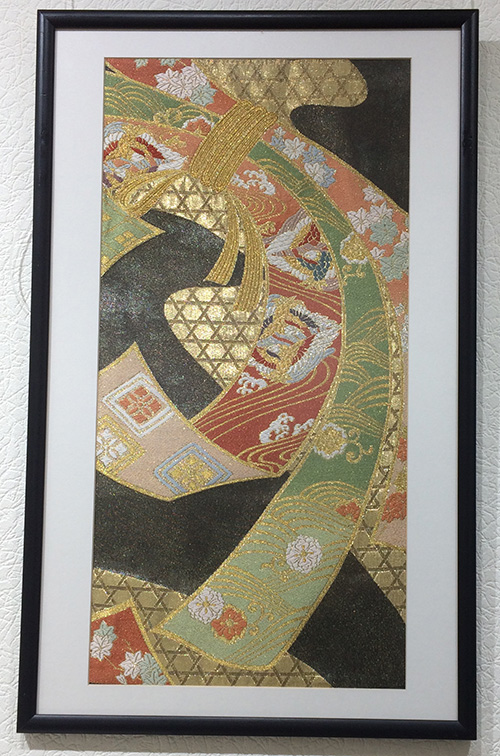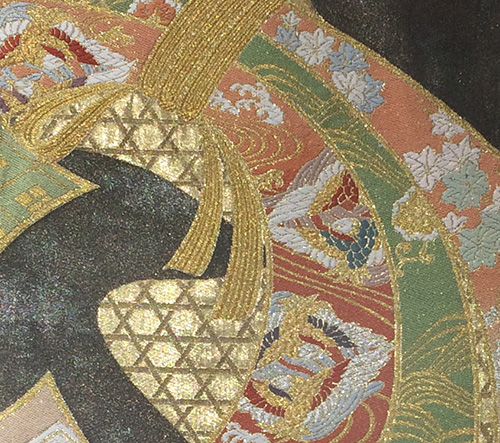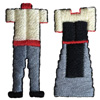 Japanese kimono is a unique garment. It differs so much from most other folk costumes around the world. We offer you a very fine collection of modern kimonos, Japanese outerwear, ornate obi belts, and various folk accessories. If you want to know the difference between furisode, homongi, and komon kimono, male and female kimono and obi, or would like to see modern purses with authentic motifs, then this article is just for you.
Japanese kimono is a unique garment. It differs so much from most other folk costumes around the world. We offer you a very fine collection of modern kimonos, Japanese outerwear, ornate obi belts, and various folk accessories. If you want to know the difference between furisode, homongi, and komon kimono, male and female kimono and obi, or would like to see modern purses with authentic motifs, then this article is just for you.
The prototype of modern kimono appeared in Japan in the Heian period (794-1185). In the 13th-15th centuries, the basic types of kimono for different social classes were set. For several centuries, Japanese people widely used kimono in day-to-day life and during festive celebrations. Unfortunately, today, this noble garment is almost extruded – Japanese men and women prefer modern European-style clothing instead of traditional kimono.
The shape of kimono is unique and different from usual garments typical for Europe, America, or Africa. While in other countries, the outfits emphasize body curves, Japanese kimono accentuates only shoulders and waist. In this culture, the less prominent are the curves, the better and the more beautiful it is considered.
Ornate Japanese kimonos and obi belts
Furisode kimono – ornate red kimono with long sleeves. It is traditionally used by unmarried girls for such occasions as wedding, graduation ceremony, celebration of adulthood, etc. This particular kimono has depictions connected with all four seasons, so it can be worn during the whole year.
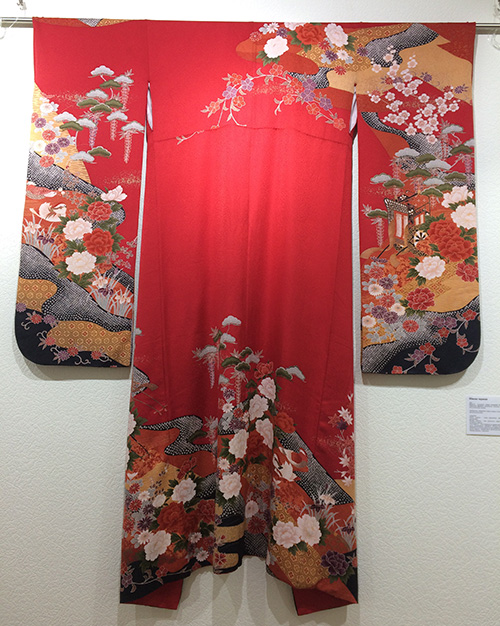
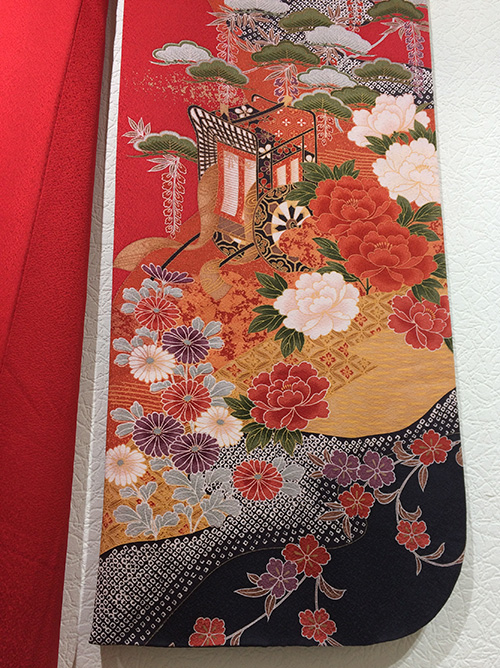
Fukuro obi – modernized kimono belt that appeared in the end of the 1920s. This belt is less formal but it can also be worn for formal occasions. It is made from brocade; the patterns cover 60% of its length (which is 4.5 m) – but only on one side. The lining of fukuro obi can be made from silk or brocade.
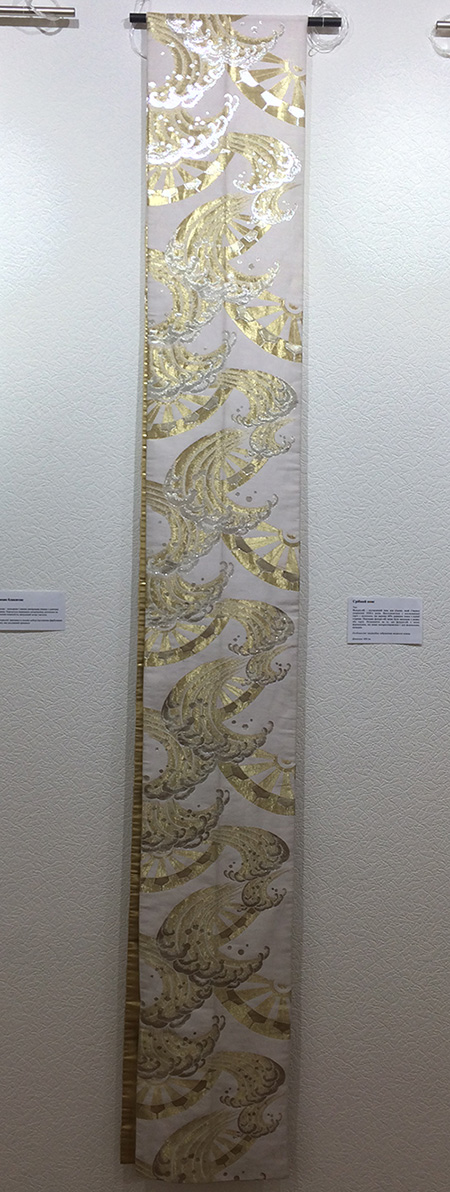
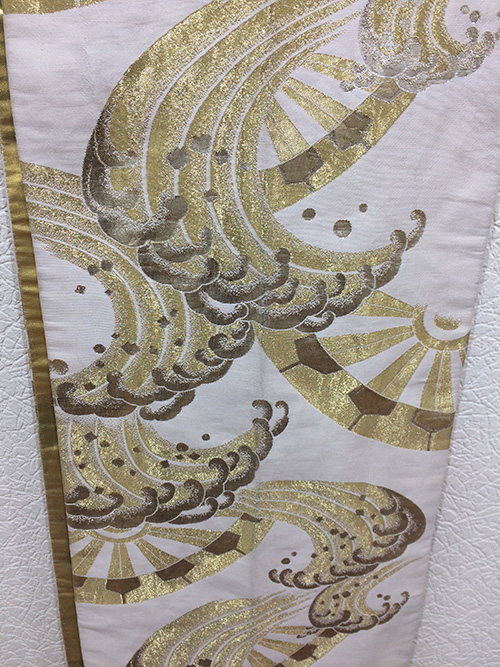
Furisode kimono – bright and beautifully patterned kimono with long sleeves. It is usually worn by unmarried girls for such occasions as wedding, graduation ceremony, celebration of adulthood, etc. This particular garment is dyed using the shibori tie-dye technique.
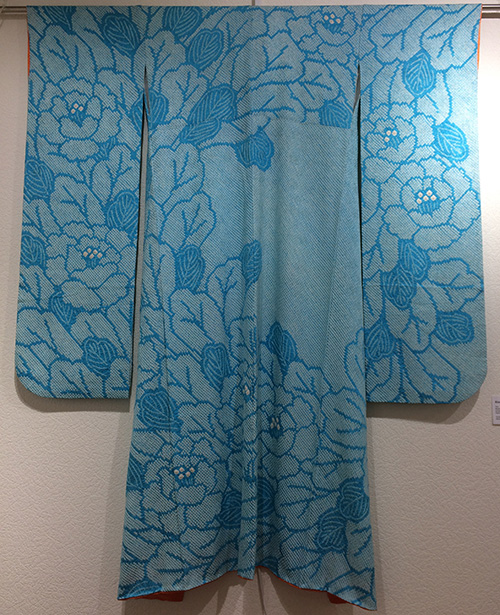
Male and female kimonos. The women’s garment is a komon kimono. Komon is a day-to-day kimono, worn by Japanese females of any age and marital status. This particular garment is used by women older than 20 years old. The belt is a fukuro obi; it’s length is 4.88 m. The male kimono is dark-blue. It doesn’t have many decorations at the outside but is embellished with rich embroidery at the inside.
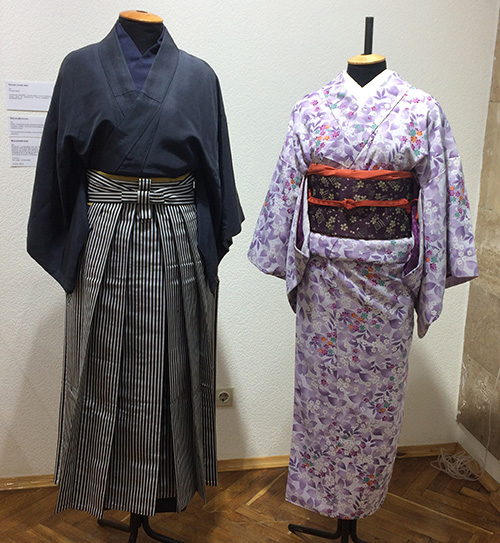
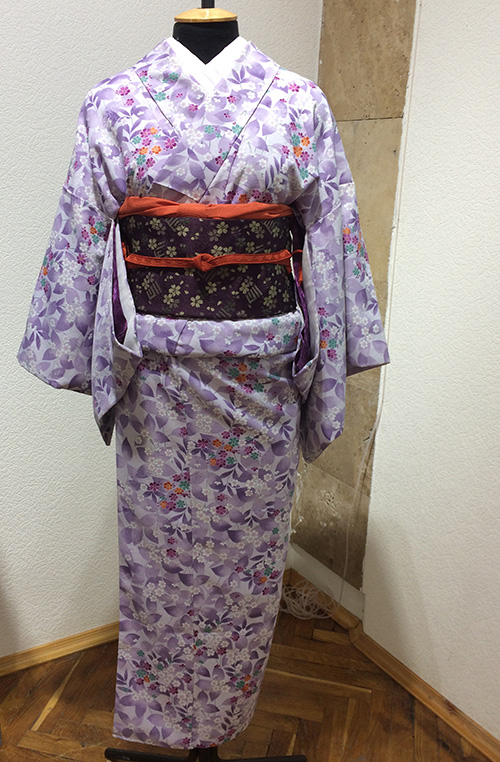
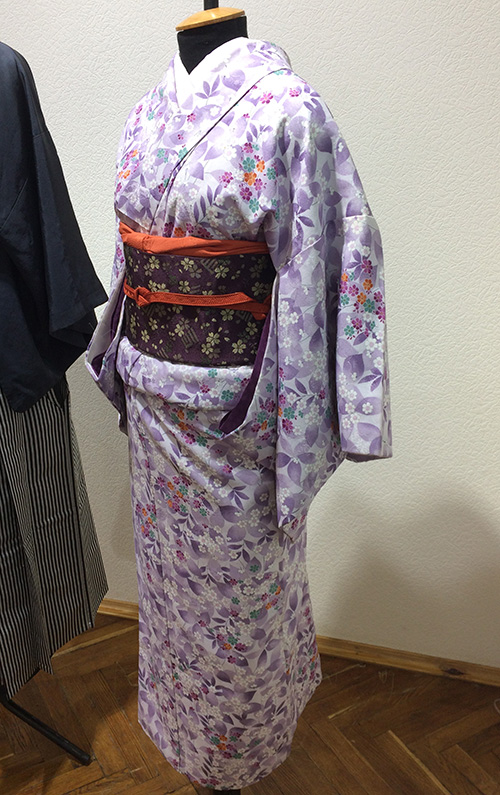
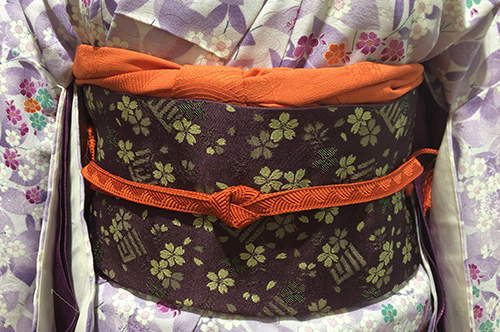
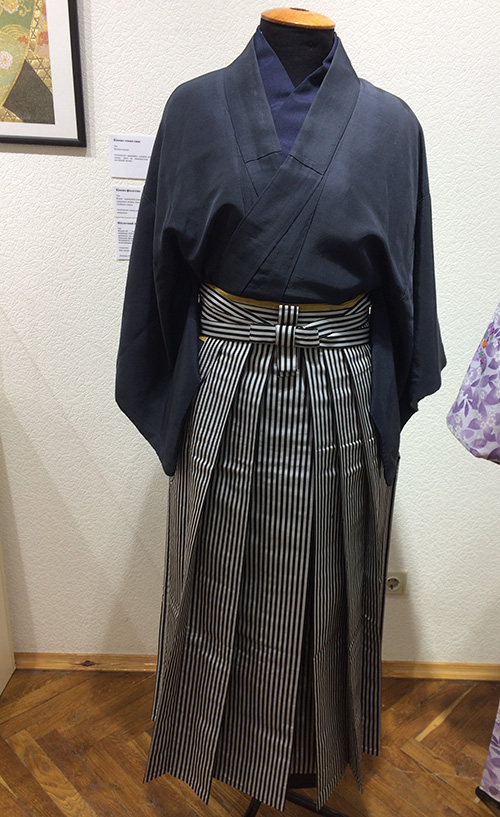
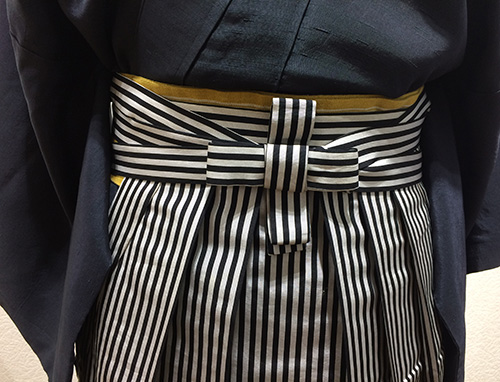
Fukuro obi decorated with embroidery on both sides. Its length is 4.12 m. The embroidery symbolizes day and night. Fukuro obi is a modernized kimono belt that appeared in the end of the 1920s. This belt is less formal but it can also be worn for formal occasions. It is made from brocade; the patterns cover 60% of its length – but only on one side. The lining of fukuro obi can be made from silk or brocade.
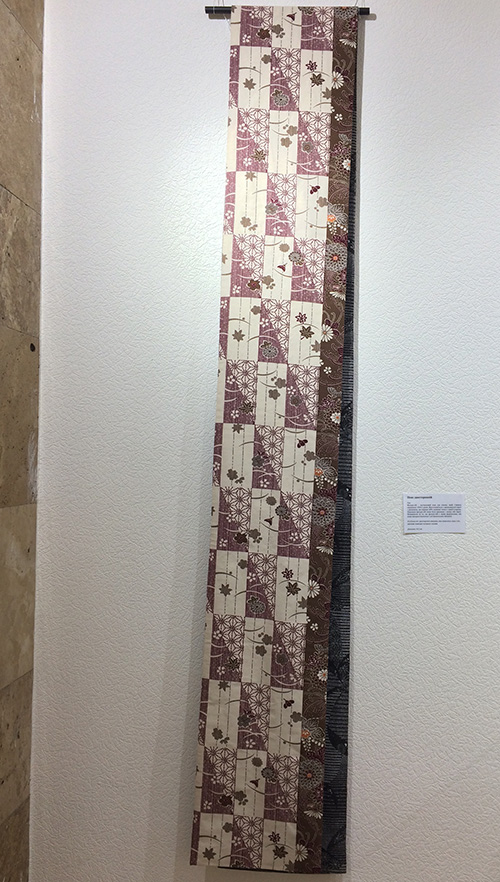
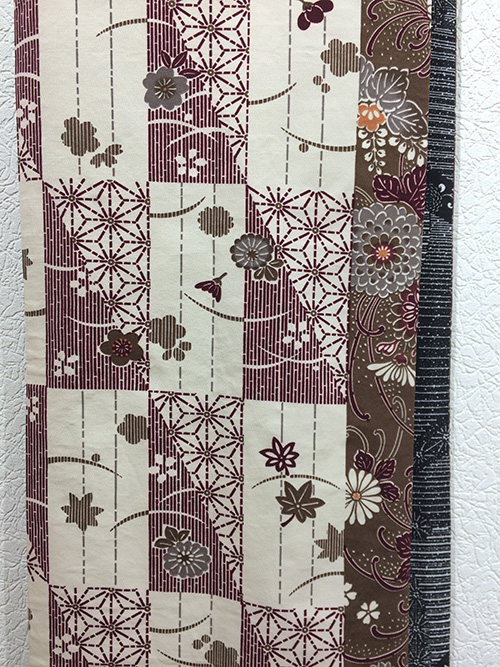
Fukuro obi in autumn themes. Its length is 4.34 m. Fukuro obi is a modernized kimono belt that appeared in the end of the 1920s. This belt is less formal but it can also be worn for formal occasions. It is made from brocade; the patterns cover 60% of its length – but only on one side. The lining of fukuro obi can be made from silk or brocade.
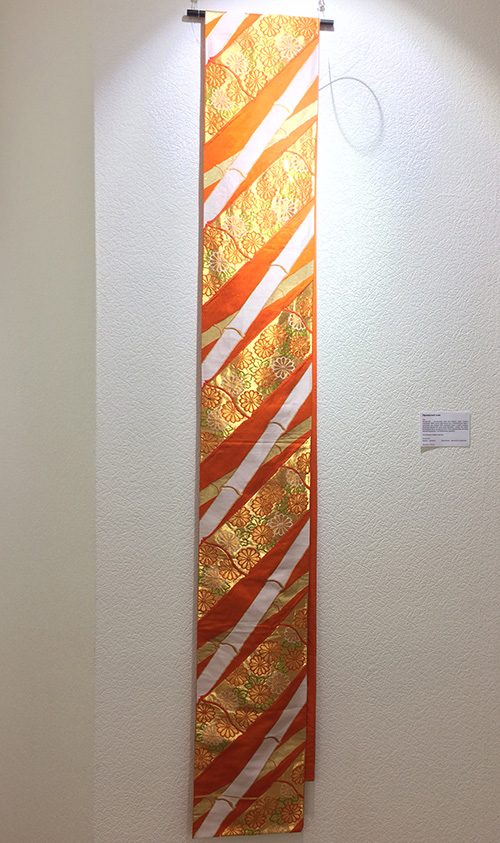
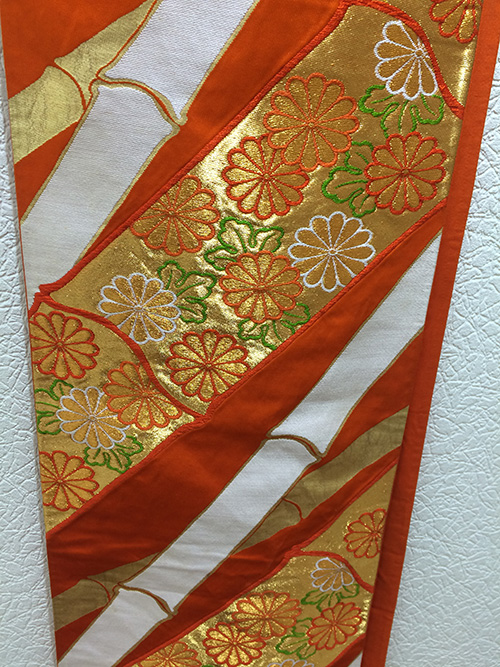
Fukuro obi decorated with stylized tortoiseshell (means longevity). Its length is 4.22 m. Fukuro obi is a modernized kimono belt that appeared in the end of the 1920s. This belt is less formal but it can also be worn for formal occasions. It is made from brocade; the patterns cover 60% of its length – but only on one side. The lining of fukuro obi can be made from silk or brocade.
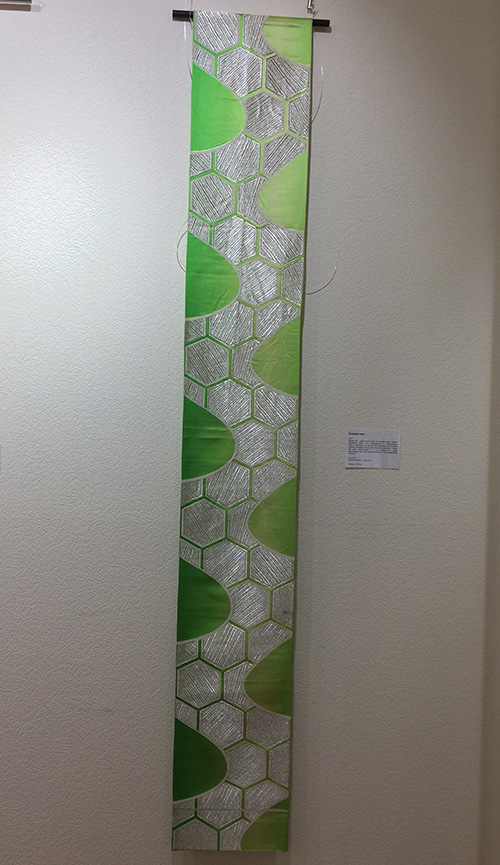
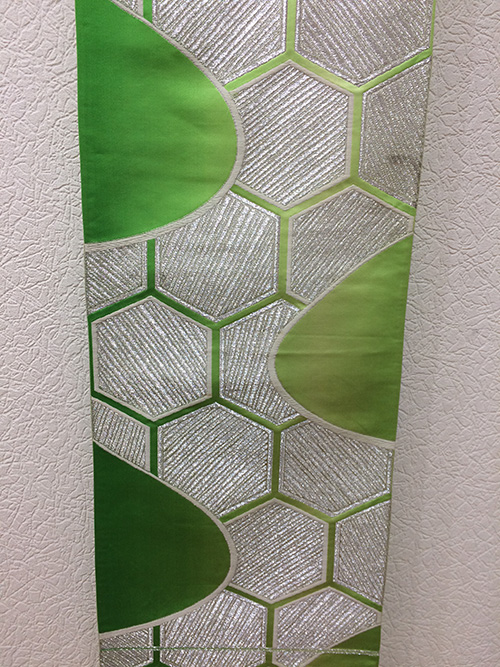
Outer robe called “uchikake”. It is worn on top of the kimono. This particular garment is very colorful and adorned with embroidered images of a crane – one of sacred animals in Japanese culture. By the way, in modern Japan, the term “uchikake” is used only for the bride’s outerwear.
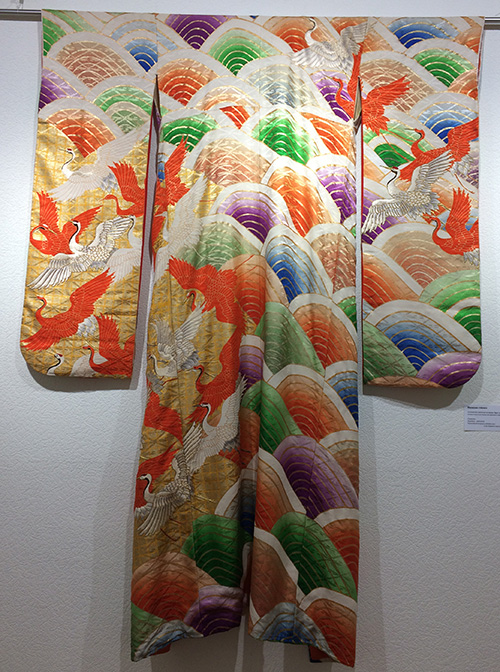
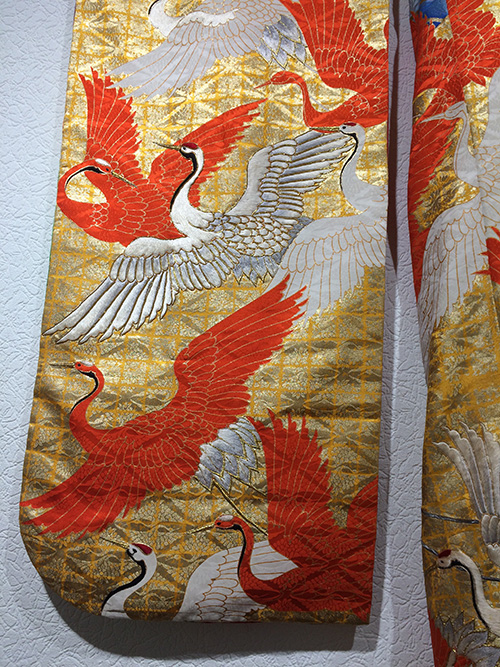
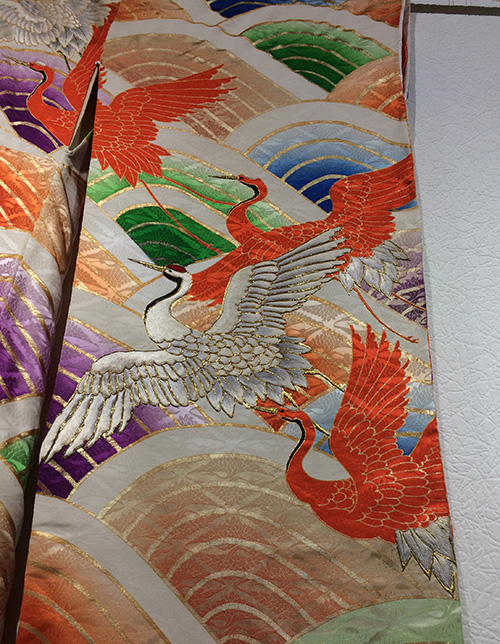
Ornate fukuro obi. Its length is 4.20 m. Fukuro obi is a modernized kimono belt that appeared in the end of the 1920s. This belt is less formal but it can also be worn for formal occasions. It is made from brocade; the patterns cover 60% of its length – but only on one side. The lining of fukuro obi can be made from silk or brocade.
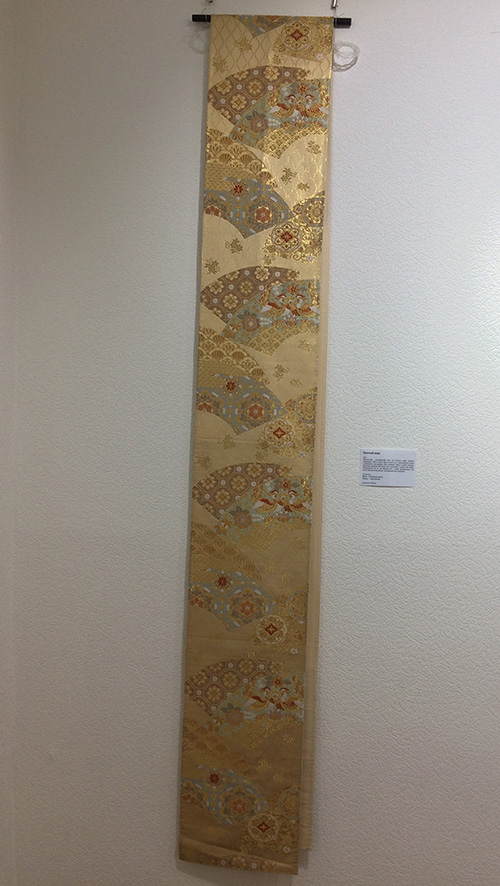
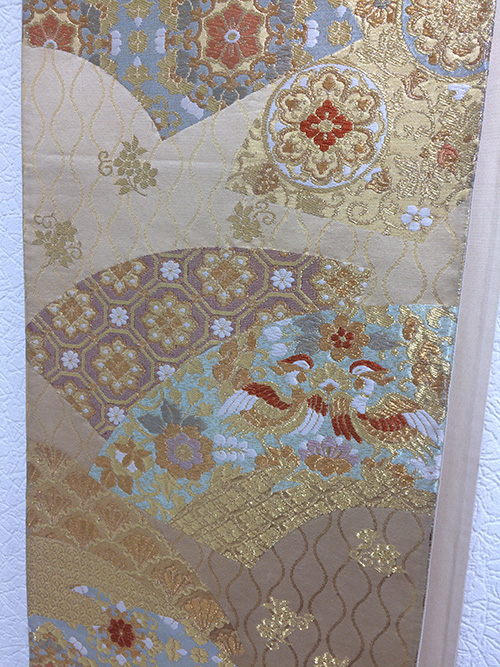
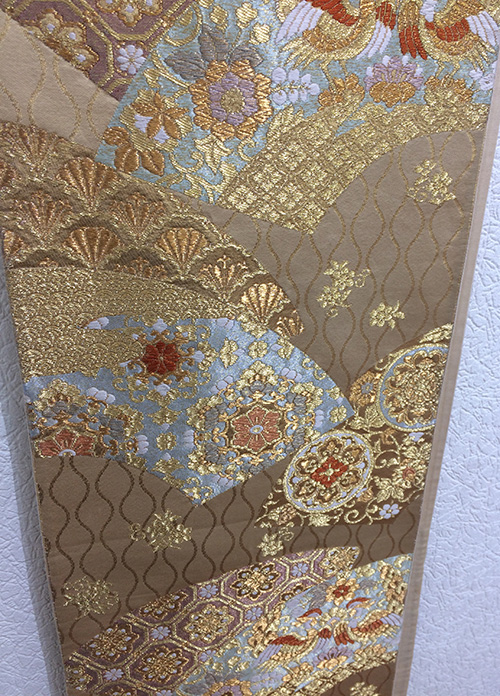
Summer komon kimono. Komon is a day-to-day kimono, worn by Japanese females of any age and marital status.
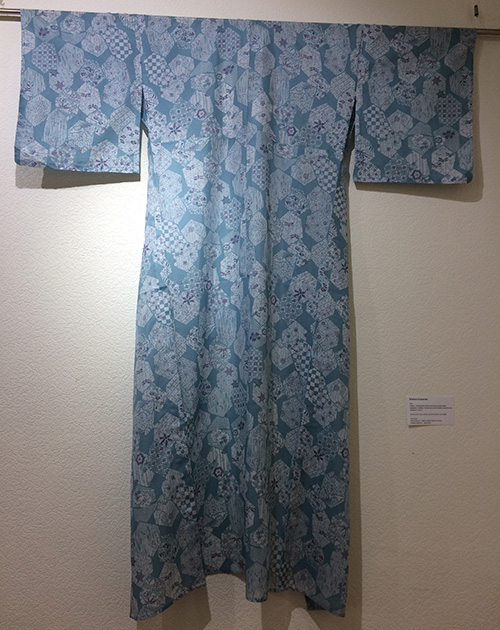
Fukuro obi decorated with pretty patterns and embroidery. Its length is 3.95 m. Fukuro obi is a modernized kimono belt that appeared in the end of the 1920s. This belt is less formal but it can also be worn for formal occasions. It is made from brocade; the patterns cover 60% of its length – but only on one side. The lining of fukuro obi can be made from silk or brocade.
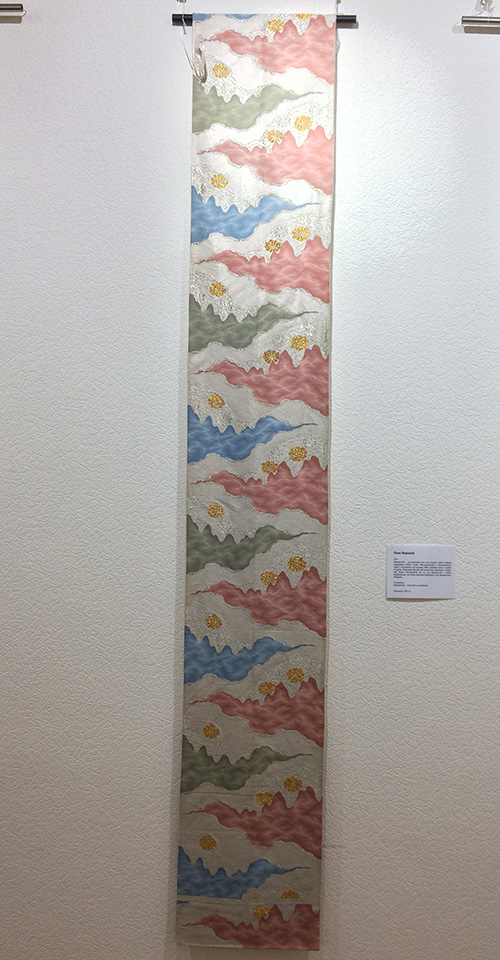
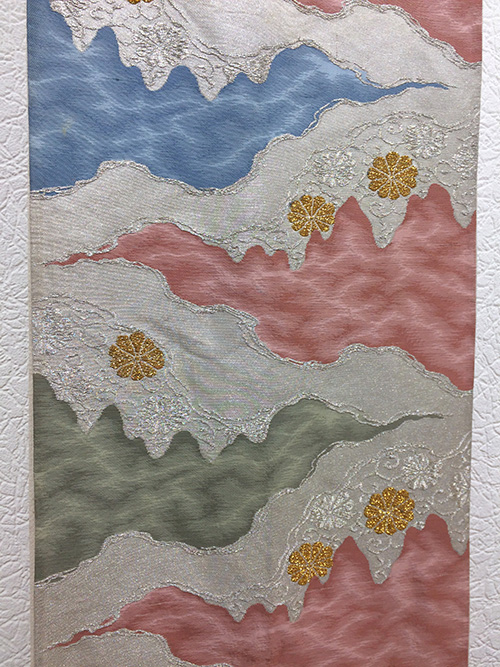
Furisode kimono – beautifully patterned kimono with long sleeves. It is usually worn by unmarried girls for such occasions as wedding, graduation ceremony, celebration of adulthood, etc. This particular kimono is usually worn for the celebration of adulthood.
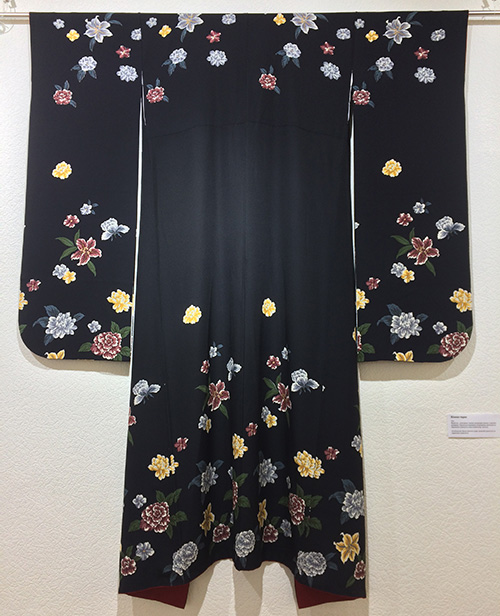
Fukuro obi in modern design. Its length is 4.28 m. Fukuro obi is a modernized kimono belt that appeared in the end of the 1920s. This belt is less formal but it can also be worn for formal occasions. It is made from brocade; the patterns cover 60% of its length – but only on one side. The lining of fukuro obi can be made from silk or brocade.
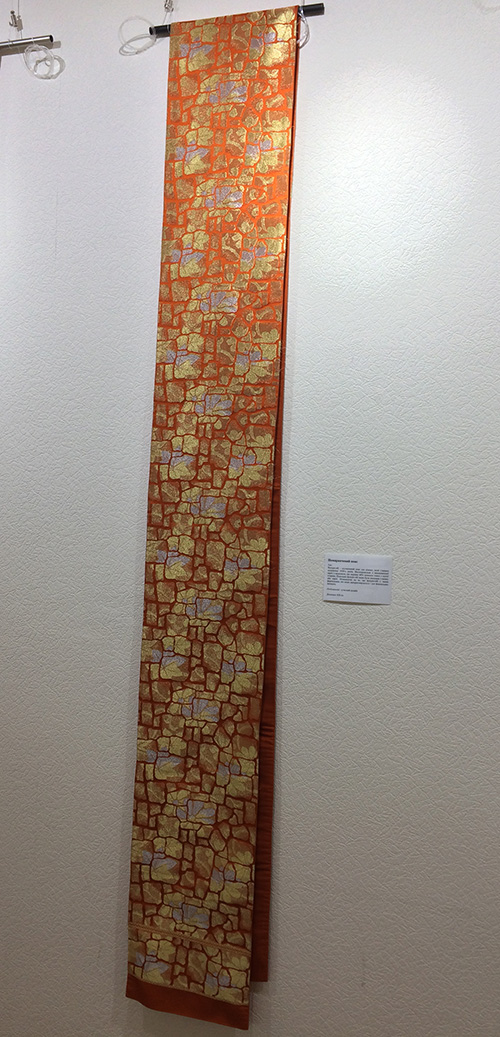
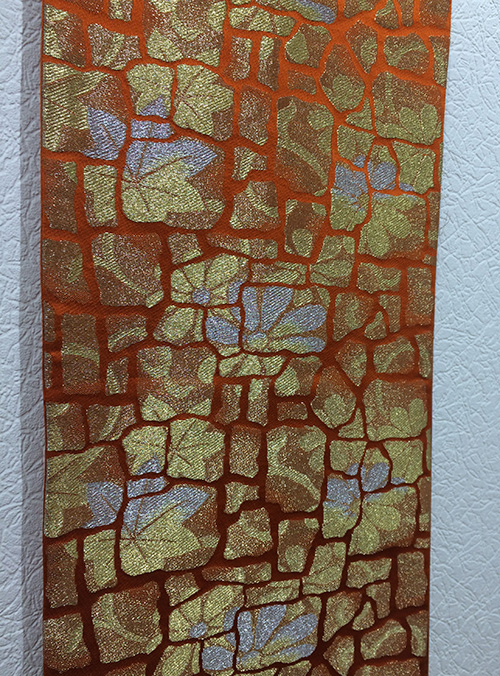
Homongi kimono. It is a festive garment – women wear it to parties, official events, or even weddings (guests use homongi, not brides). This particular kimono is used by females who are younger than 30.
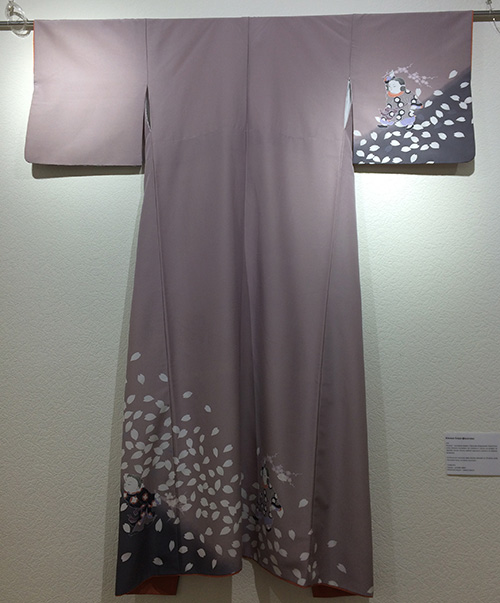
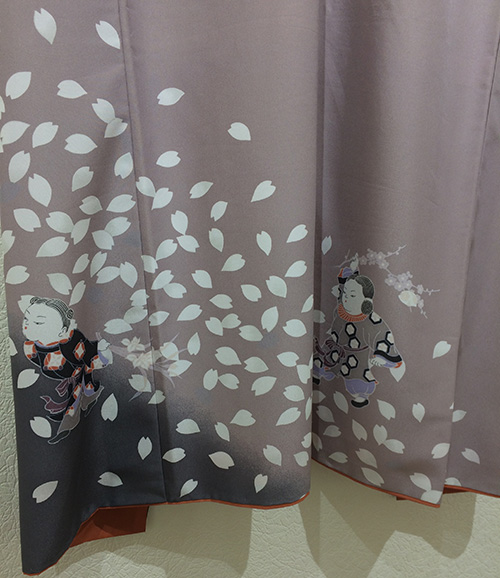
Modern Japanese folk accessories: shoes, purses, hairpins, adornments, etc.
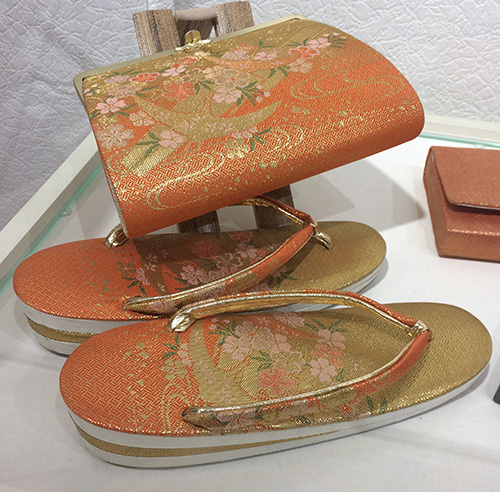
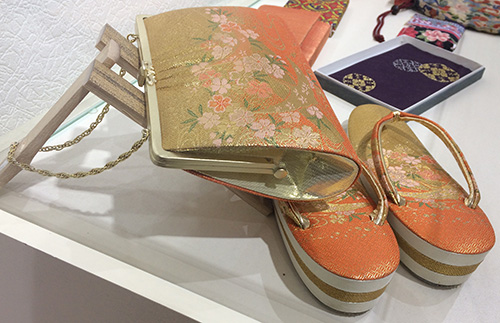
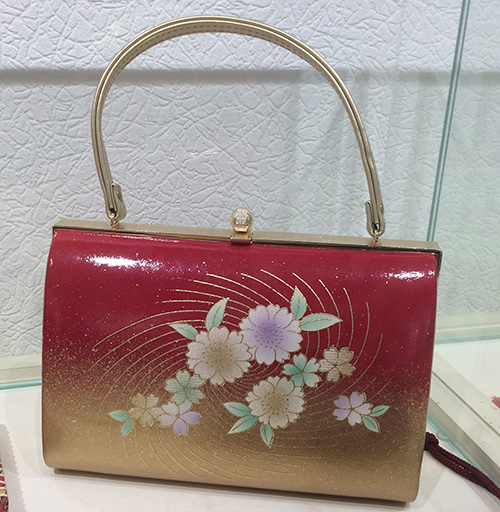
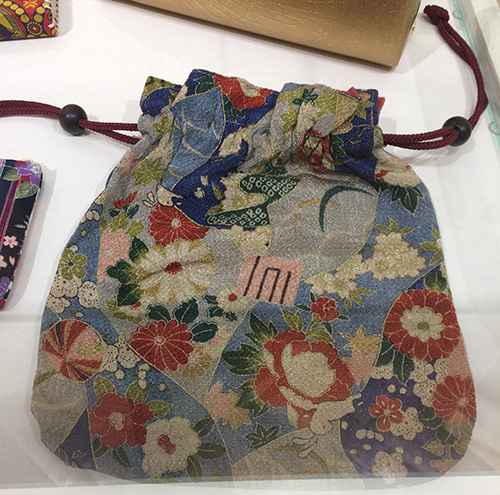
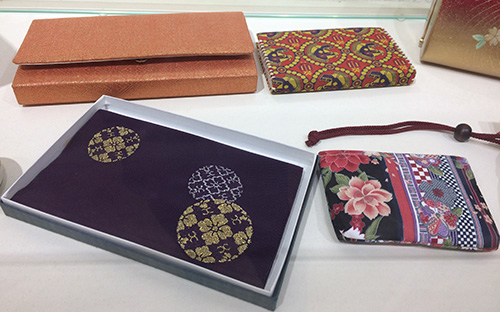
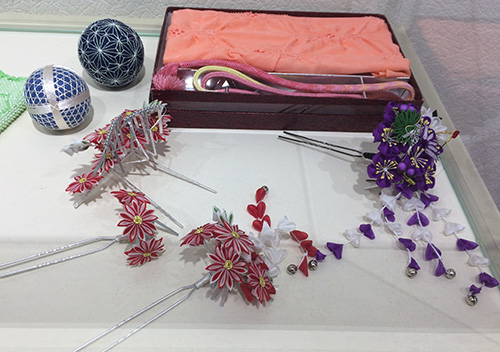
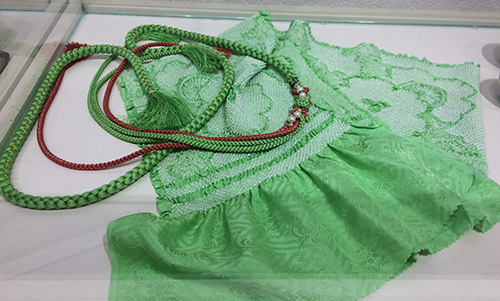
Charming Japanese embroidery patterns
